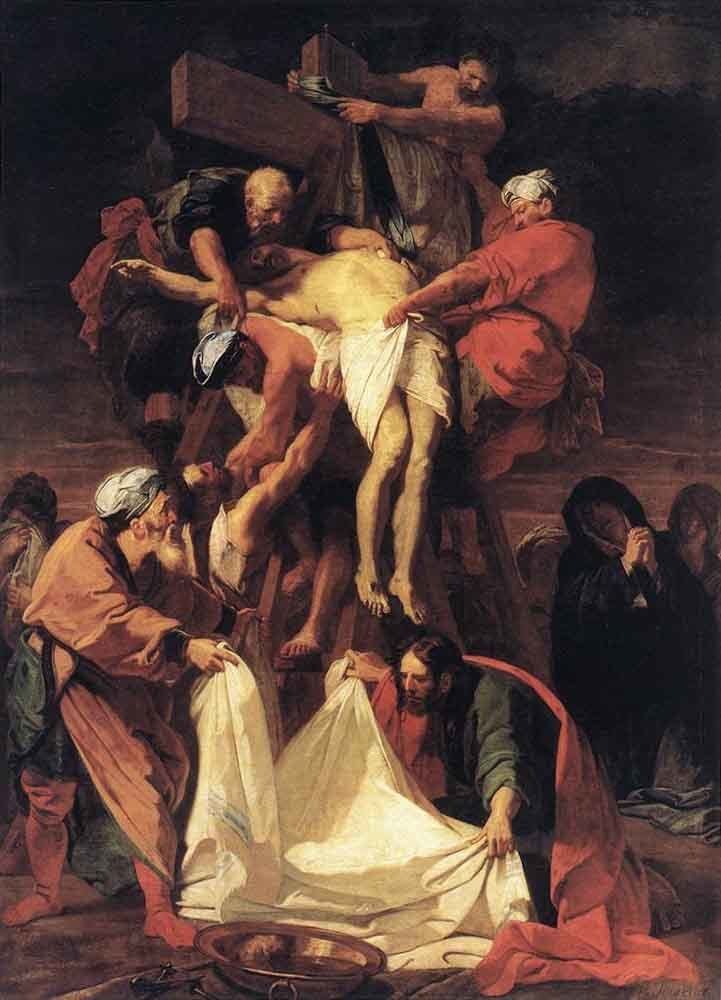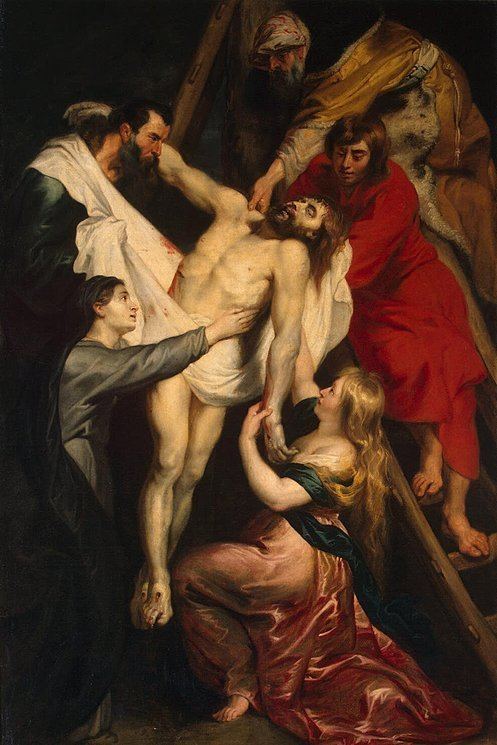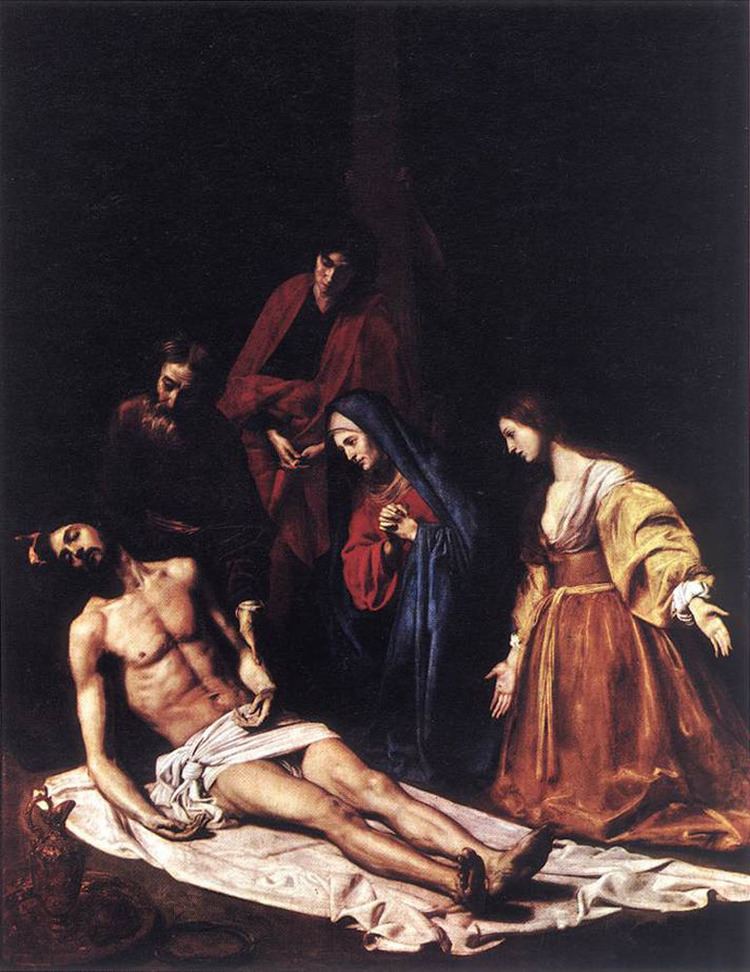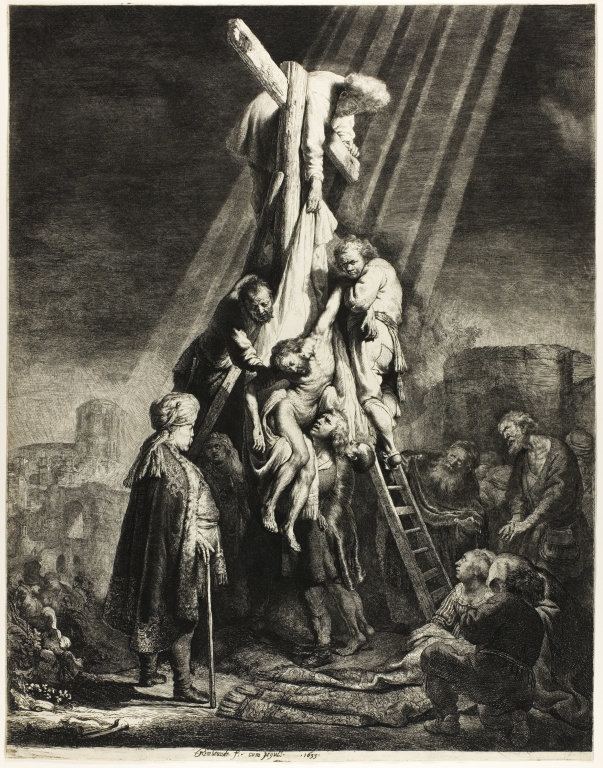 | ||
The renaissance unchained rogier van der weyden s descent from the cross
The Descent from the Cross (Greek: Ἀποκαθήλωσις, Apokathelosis), or Deposition of Christ, is the scene, as depicted in art, from the Gospels' accounts of Joseph of Arimathea and Nicodemus taking Christ down from the cross after his crucifixion (John 19:38-42). In Byzantine art the topic became popular in the 9th century, and in the West from the 10th century. The Descent from the Cross is the 13th Station of the Cross.
Contents
- The renaissance unchained rogier van der weyden s descent from the cross
- Van der weyden deposition
- Development of the image
- Selected examples
- References

Other figures not mentioned in the Gospels who are often included in depictions of this subject include St. John the Evangelist, who is sometimes depicted supporting a fainting Mary (as in the work below by Rogier van der Weyden), and Mary Magdalene. The Gospels mention an undefined number of women as watching the crucifixion, including the Three Marys, (Mary Salome being mentioned in Mark 15:40), and also that the Virgin Mary and Mary Magdalene saw the burial (Mark 15:47). These and further women and unnamed male helpers are often shown.

Van der weyden deposition
Development of the image

Even in early depictions the details and posing of the composition, and especially the position of Christ's body, are varied. The scene was usually included in medieval cycles of the Life or the Passion of Christ, between the Crucifixion and the Entombment of Christ. The Lamentation of Christ, or Pietà, showing the body of Christ held by Mary, may intervene between these two, and is common as an individual image, especially in sculpture. The Bearing of the body, showing Christ's body being carried to his tomb, and the Anointing of Christ's body, showing the body laid flat on the top of the tomb or a similarly-shaped "anointing-stone" are other scenes that may be shown. This last is especially important in Orthodox art, where it is shown on the Epitaphios.

With the Renaissance the subject became popular for altarpieces, partly because of the challenges of the composition, and the suitability of its vertical shape. The Mannerist version of Rosso Fiorentino is usually regarded as his most important work, and Pontormo's altarpiece is perhaps his most ambitious work. The subject was painted several times by both Rubens and Rembrandt, who repeated one of his paintings (now in Munich) in a large print, his only one to be mainly engraved, as well as making two other etchings of the subject.
Selected examples
With articles:



